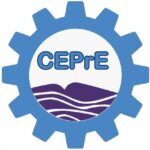Cabo Delgado, Mozambique
Mapping marine litter on coastal areas with unmanned aerial systems: Case study at Pemba
THE PROJECT
Motivation
Mozambique has the fourth-longest coastline in Africa, stretching over 2700 kilometers along the Indian Ocean and extended volumes of Marine Debris (MD) can be seen in most of the beaches. Traditional MD monitoring efforts involve few Mozambicans using in-situ visual census methods to count, classify and recollect the individual marine litter items. Guidelines and protocols have been designed to standardize the performance of monitoring strategy on the beaches, defining holistic metrics of the survey, such as alongshore beach sector length, fraction size of items and frequency of the in-situ surveys. These surveys are widely employed in most developing countries due to their low cost and minimal equipment required by inexperienced surveyors under instruction; however, the analysis still needs high-demanding manual work while also being time-consuming and spatially limited (100m – 500m transects). To positively influence and support decision-making actions, accurate large scale monitoring systems need to be in place.
Goals
We want to develop a non-intrusive automatic UAS-based data collection mechanism to collect orthophotos to give insights about MD in Pemba’s coastline and allow policy makers and scientists to analyses data and infer on coastlines pollution.
Long-term Vision
This project is an opportunity to pioneer the development of new technologies that will ultimately reduce MD searching time and mitigate marine litter pollution effort through enhanced data collection and processing. The MD abundance and spatial distribution maps produced by this project will permit to understand the location of each category of MD in the coastal area of Mozambique. Furthermore, these MD maps can also improve the clean-up activities on coastal environments carried out by governmental authorities in close partnerships with all stakeholders, including non-governmental organizations, municipalities, local communities, and the private sector. Additionally, it will create capacity among the young Mozambican research community regarding the application of Artificial Intelligence technologies to tackle MD issues which require long periods of observation in remote spots where permanent access is limited.
Stay tuned for news in the near future!
SPONSORS
THE TEAM

Gil Gonçalves
External collaborator, University of Coimbra, Department of Mathematics and INESC Coimbra, Portugal







